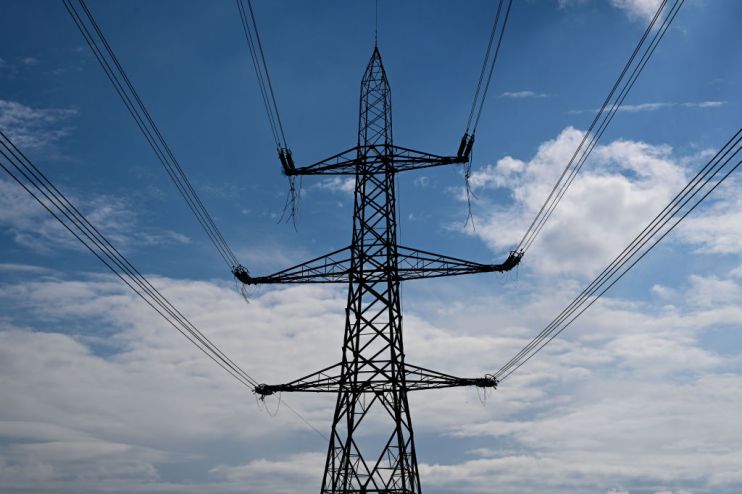Sunak’s support for National Grid is welcome but private sector key for net zero goals

Rishi Sunak has just suffered two grisly by-election losses, and there are growing expectations of a heavy defeat for the Conservatives when the nation goes to the ballot box next year.
If the Prime Minister is on course for an early exit there will be debates over what legacy he leaves behind.
From an energy perspective, he deserves credit for embracing long-term thinking on the future of our electricity grid, one area where it’s possible he could create meaningful change.
The government is committed to electrifying our energy needs by 2035 – shifting the UK from fossil fuels to renewables and heat pumps – to strengthen supply security and reach the country’s climate goals.
With 85 per cent of the UK’s housing stock heated by gas and over 75 per cent of the UK’s energy needs still met by fossil fuels, the scale of this challenge is enormous.
To that end, the government passed the Energy Act last week, hoping to attract as much as £100bn in private investment through liberalising the sector.
Yet, private investment is not enacted through parliament, but by businesses which have to make a judgement over the UK’s investment climate.
As well as helping the UK go green, renewable projects are a litmus test for whether Britain is ready for business, with slashing red tape in the electricity grid vital also for restoring investor confidence in the country.
Project logjams stall green ambitions
A key challenge renewable developers face is the lengthy process for connecting renewable projects to the country’s infrastructure.
Sunak signalled his intentions here last month, pledging to speed up development timelines so projects can be ramped up to meet net zero goals and climate pledges.
At the moment, projects await connections in a single queue overseen by National Grid and its electricity system operator, ESO.
Problems with the current system have been well-documented, including by City A.M., with wind turbines and solar farms effectively stalling for years in development hell awaiting connection to the grid.
A first-come first-serve queue holds up new sites for as long as 12-14 years, despite taking less than a year to build in some cases, with less viable projects blocking credible developments simply on the basis of entering the production pipeline earlier.
British Gas owner Centrica’s exposed the stark challenge the grid faces in a report published last week – revealing that as much as 20 per cent of the current queue for connections is blocked by zombie projects lacking land rights and planning consent.
Yet, Sunak’s pledges reflect that regulators are aware of the challenge facing them.
Ofgem is set to approve plans from National Grid to remove projects that fail to meet development milestones – with a decision expected next month.
Sunak’s push also follows electricity network commissioner Nick Winser’s landmark review, which called on the government to offer households near new energy projects lump sum payments to ensure the rollout of new electricity lines – which the government is also considering.
With the government now eager to remove barriers for electrification, the emphasis is on National Grid to harness their backing and keep evolving the process to make it easier for developers.
National Grid warms up to historic task
ESO is now consulting on allowing developers to make their own connections to the grid, which has been welcomed within the industry.
Zoisa North-Bond, chief executive of Octopus Energy Generation, told City A.M.: “Reforming the grid queue is part of the equation for creating the backbone of a secure, clean, cheap energy system. We also need to drastically increase competition in how grid connections are built out – with an understanding that demand flexibility will play a key role.”
Andy Willis, chief executive of Kona Energy also praised ESO’s approach, and wants them to go even further to “open up more competition” with third parties able to build new substations and pylons.
Trade association Renewable UK wants the ESO to be savvier, making decisions ahead of time, predicting where connections will be needed based on the queue – with the race to reach net zero making electrification more and more urgent.
John Twomey, head of customer management at National Grid is aware of this challenge, with the network operator aiming to assess the queue more forensically and ensure the system is ready for the vast influx of power.
“The scale of net zero means that we need to be building a network ahead of project needs. That needs to be balanced with the right investment decisions, but essentially it means that the network is readily available in the right areas, when projects look to connect to it,” he told City A.M.
One area where the ESO is looking to innovate further is a “plug and play” initiative by standardising connection arrangements for substations to make it easier to design and construct a shared arrangement for the network to make it more flexible and adaptable.
While the challenge of net zero and energy security remains historically difficult, it is highly encouraging to see National Grid now looking to meet the challenge.
Sunak’s push for electrification is highly welcome, but state backing is no substitute for private investment – and we can only hope National Grid and the ESO have done enough to ensure the UK is appealing for green investment.